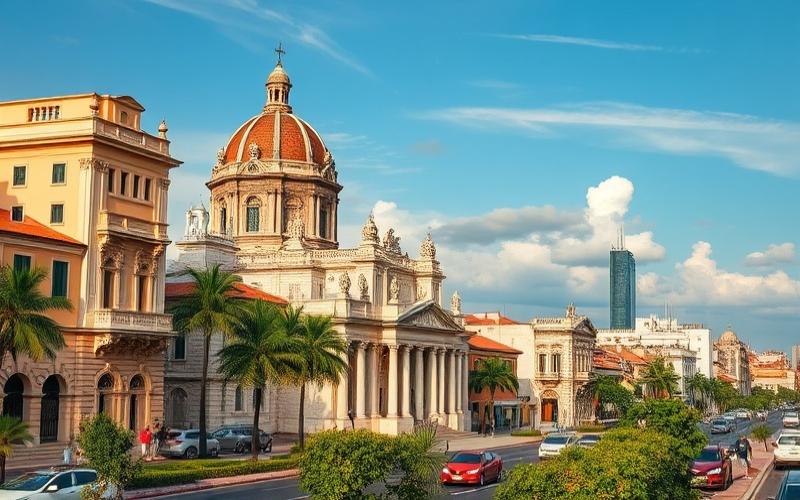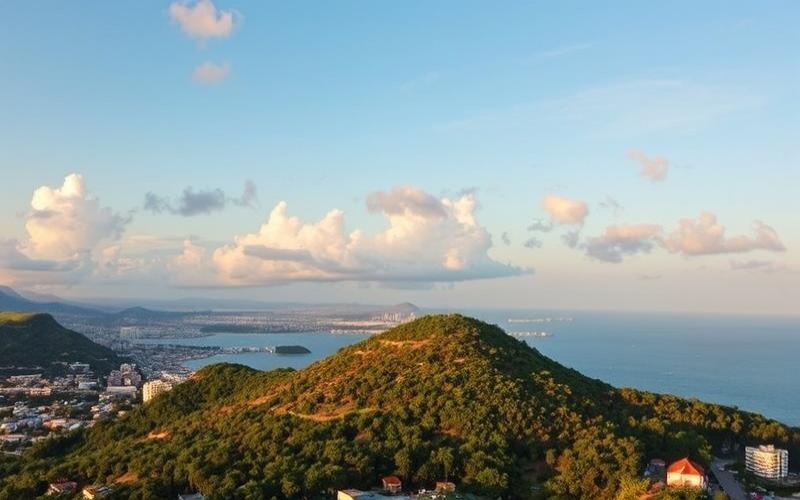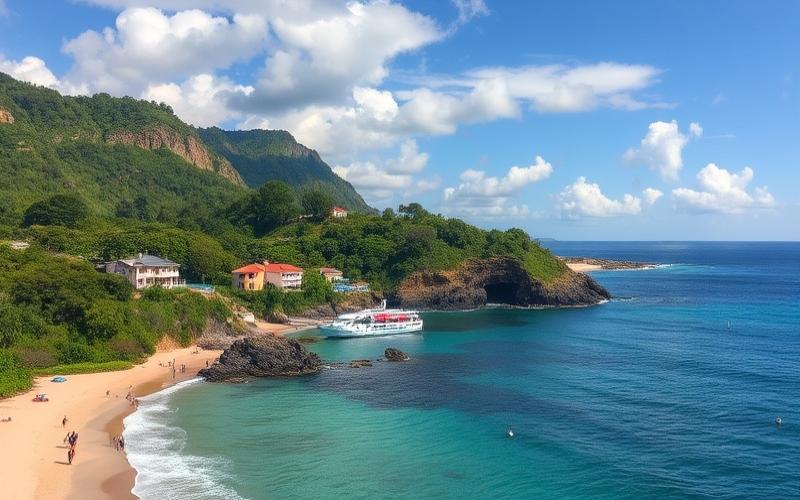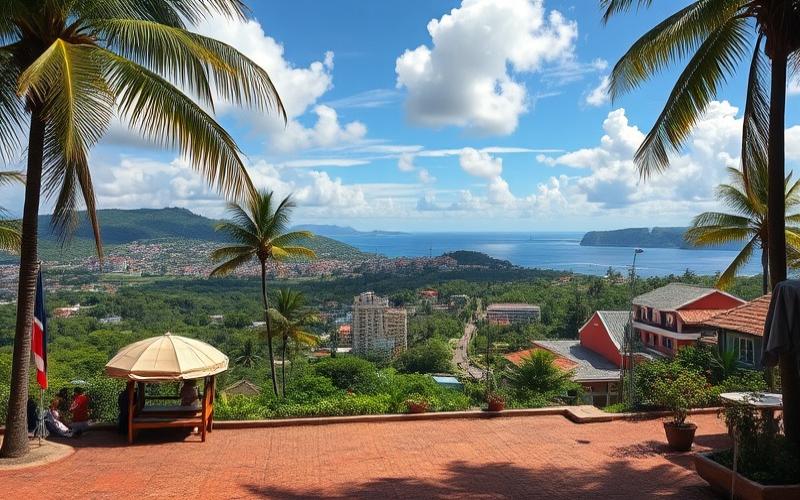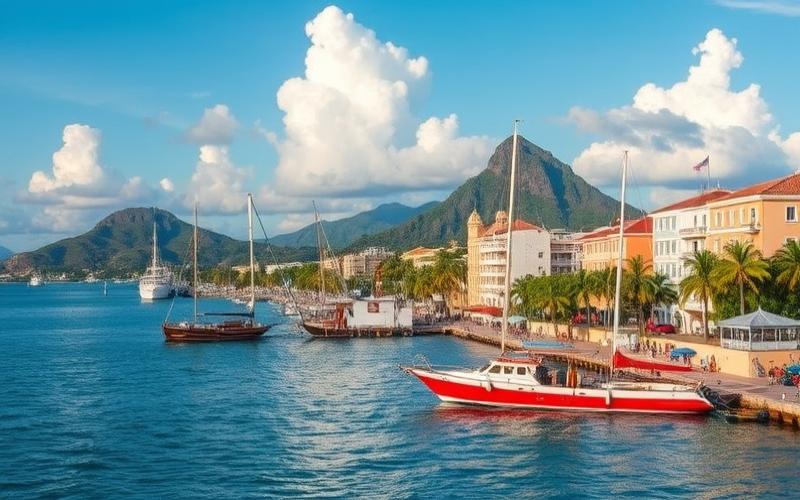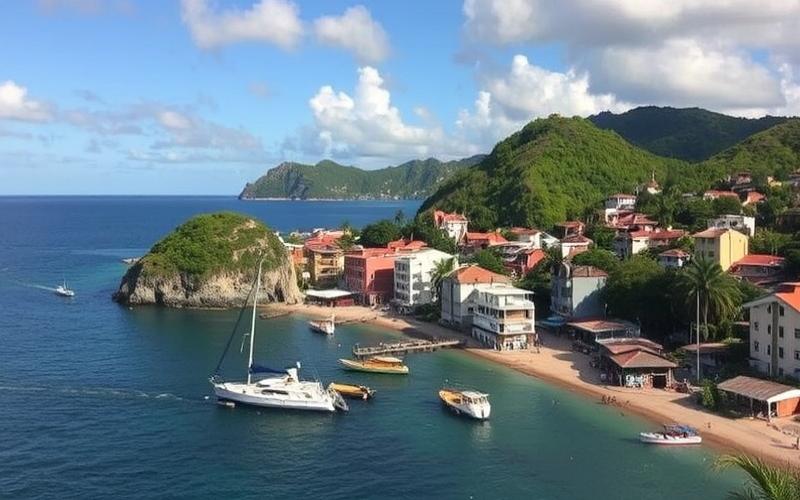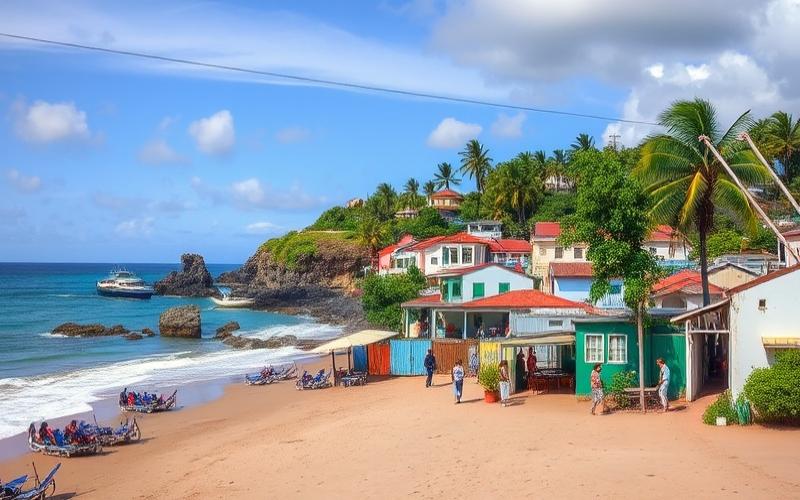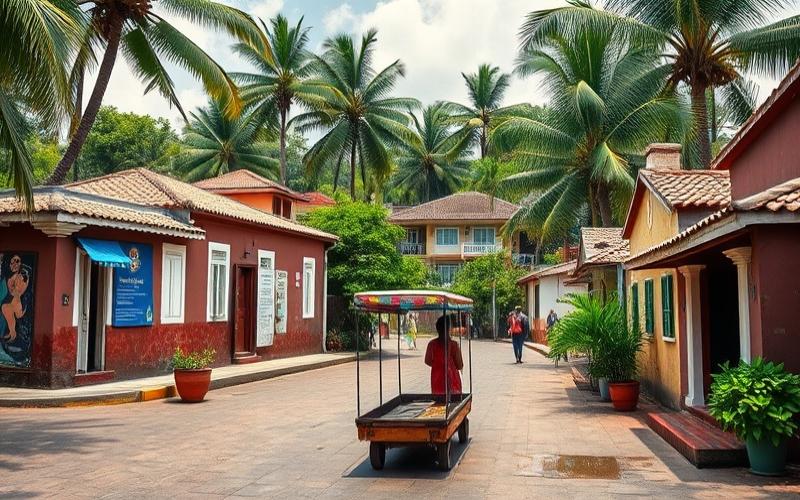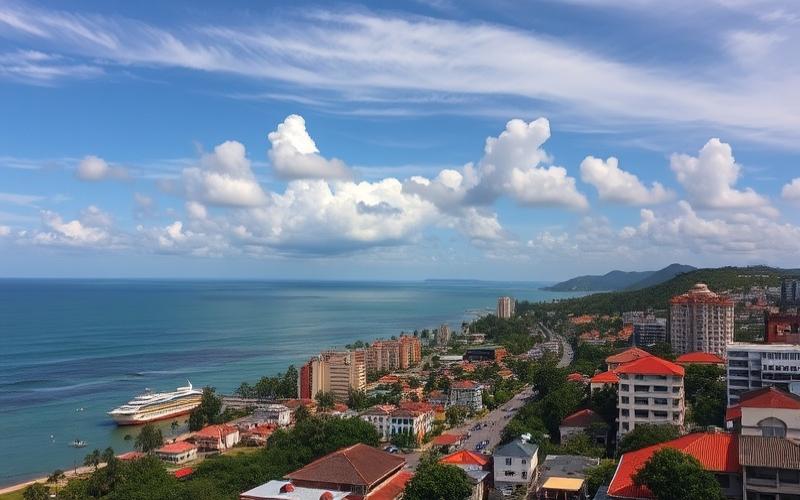
 Published on and written by Cyril Jarnias
Published on and written by Cyril Jarnias
Investing in Parking Lots in the Dominican Republic: A Lucrative Opportunity
Investing in parking lots in the Dominican Republic proves to be an often underestimated but highly lucrative opportunity for savvy investors. As the country experiences significant economic growth and increased urban mobility, the demand for safe and accessible parking solutions has never been higher.
Why Invest in Parking Lots?
This article examines the numerous benefits of this strategic investment, including attractive profitability and relatively low management costs, while highlighting potential challenges investors may face.
Good to Know:
Through thorough analysis of the local market and risk assessment, discover how to capitalize on this booming niche.
Parking Lot Market Analysis in the Dominican Republic
Current Demand Overview
The demand for parking lots in major Dominican Republic cities – Santo Domingo, Santiago, Punta Cana – is high and steadily growing. This phenomenon is explained by rapid urbanization, increased vehicle ownership, and tourist pressure in urban and coastal areas. Santo Domingo concentrates a large portion of the demand due to its density, presence of business centers, and commercial activities. Punta Cana, heavily tourist-oriented, sees increased demand for parking near hotels, beaches, and airports. Santiago, the country’s second city, is experiencing expansion in commercial and residential infrastructure, also stimulating parking demand.
Trends and Factors Influencing Demand
- Growth in vehicle ownership: The increase in private and commercial vehicles is supported by economic growth and greater accessibility to automobiles.
- Tourism development: The Dominican Republic is one of the main Caribbean tourist destinations, particularly Punta Cana, generating high parking needs for visitors, especially at airports, hotels, and points of interest.
- Urban expansion: New real estate and commercial projects in major cities systematically include parking solutions to meet resident and user demand.
- Public policies: Authorities, particularly through the Parquéat_Rd project, aim to improve parking supply and management to streamline traffic and reduce congestion.
Typology and Analysis of Existing Supply
| Parking Type | Description | Presence in Major Cities |
|---|---|---|
| Underground | Primarily in shopping malls and offices | Santo Domingo, Santiago |
| Surface (Above Ground) | Most widespread, often associated with urban centers | Everywhere |
| Automated | Still marginal, but emerging in premium areas | Santo Domingo, Punta Cana |
| Private Parking | Residences, hotels, businesses | Widespread |
| Public Parking | Managed by municipalities or via Parquéat_Rd | Growing |
Main Players and Investors
- Parquéat_Rd: Public project under the Ministry of Public Works (MOPC), overseeing quality, safety, and expansion of public parking nationwide.
- Local and international real estate developers: Systematically integrate parking solutions in their residential, hotel, or commercial projects.
- Airports and shopping centers: Offer structured parking supply, particularly in Punta Cana, where pricing policies are subject to debate.
Opportunities and Challenges for New Entrants
Opportunities:
- Continuous growth in vehicle ownership and tourism.
- Unsatisfied demand, particularly for modern solutions (automated, secure).
- Tax incentives and favorable policies for investment in urban infrastructure.
Challenges:
- Competition from established public and private projects.
- Need to offer innovative solutions (smart management, digital payment, enhanced security).
- Land price pressure in urban centers.
- Adaptation to constantly evolving local regulations.
Market Growth Forecasts (2025-2035)
| Period | Estimated Parking Demand Growth |
|---|---|
| 2025-2030 | +6 to 8% per year |
| 2030-2035 | +5 to 7% per year |
Tourism growth, real estate investments, and sustained urbanization are expected to drive demand over the next decade, with emphasis on modernizing and digitizing the supply.
Local Regulations Impacting Investment
- Parquéat_Rd project: Oversees and regulates public parking operations, imposes safety and service standards, and manages urban parking expansion.
- Construction standards: New real estate projects must integrate minimum parking quotas, varying by project type and location.
- Advantageous taxation: Some areas benefit from partial exemptions to stimulate investment in urban infrastructure.
- Municipal controls: Municipalities may impose taxes or restrictions on private parking operations, particularly in city centers.
Key Takeaways:
The Dominican Republic parking market, driven by urban and tourism growth, offers attractive investment opportunities but requires regulatory monitoring and innovation capacity to meet evolving demand.
Good to Know:
The Dominican Republic parking market is experiencing growing demand, particularly in major cities like Santo Domingo, Santiago, and Punta Cana, where continuous increases in vehicle ownership and tourism development support this need. With varied supply including underground, surface, and automated parking, major players such as Grupo Ramos and CCN compete for leadership in this dynamic market characterized by high occupancy rates and attractive returns on investment. However, new entrants may face challenges such as strict local regulations regarding urban planning and construction. Sector growth forecasts for the next five to ten years are promising, driven by urban infrastructure development and ongoing tourism projects. Investors should therefore remain attentive to regulatory changes and seize niche opportunities by adapting their offerings to specific user needs, such as electric vehicle parking, aligning with global and local sustainable mobility trends.
Profitability Factors for Parking Investments
Analysis of Initial Acquisition and Development Costs
- Purchase price: The cost of a parking space or infrastructure heavily depends on location. In Santo Domingo, Punta Cana, or Las Terrenas, prices are significantly higher in tourist areas and high-density urban zones.
- Additional expenses: Legal fees, property transfer taxes (approximately 3% on value exceeding 500,000 pesos), ITBIS (18% tax on associated services), development (asphalt, signage, automatic barriers), utility connections, and security.
- Development: Structured parking requires higher investments for structural work, while simple ground marking is less costly but offers lower profitability.
| Infrastructure Type | Estimated Initial Cost | Main Annual Charges |
|---|---|---|
| Outdoor Space | Low | Minimal Maintenance |
| Covered Parking | Medium | Security & Maintenance |
| Structured Parking | High | Insurance & Management |
Sources and Potential Revenue Levels
- Pricing Models:
- Long-term rental (monthly/annual): Very high occupancy rates in city centers (>90%) with stable rents.
- Seasonal/short-term rental like Airbnb: Higher gross yield (10–15%) due to tourist clientele but variable occupancy depending on season.
- Hourly/daily pricing for occasional visitors or local employees.
| City | Monthly Airbnb Revenue ($) | Monthly Long-term Revenue ($) |
|---|---|---|
| Punta Cana | $1,200 – $2,500 | $700 – $1,100 |
| Santo Domingo | $1,000 – $2,200 | $800 – $1,200 |
Annual gross profitability ranges between 10% and 15% for the tourist model compared to 6% to 8% for traditional residential rental.
Average Occupancy by Model/Location
- Urban/residential long-term: 80–98%
- Seasonal/coastal tourist: 60–75%, strong dependence on tourist peaks
Legal and Regulatory Aspects Influencing Profitability
- Local taxes relatively low compared to neighboring countries; attractive taxation especially in special economic/tourist zones with substantial temporary exemptions.
- Mandatory rental income declaration; property tax applicable if value >500,000 Dominican pesos.
- Municipal policies may impose quotas or restrictions on private supply in certain central areas.
Current Demand for Parking Spaces
List of factors supporting sustained demand:
- Rapid urban population growth
- Chronic shortage of public spaces in city centers
- Tourism expansion (+4 million annual visitors)
Areas such as Santo Domingo, Punta Cana/Bavaro show marked need from both residents and tourists/travelers.
Country’s General Economic Outlook
Key points:
- Strong economic growth fueled by accelerated urbanization and tourism sector dynamism
- Continuous increase in private vehicle ownership
- National policies encouraging foreign real estate investment through tax incentives
Potential impact on long-term profitability:
Foreseeable increase in urban/tourist parking demand
Progressive appreciation of well-located land assets
Risks and Challenges Specific to the Dominican Market
Summary list:
- Strong seasonal risk in coastal areas (occupancy/price variation)
- Sometimes changing local regulatory issues
- Increased competition among foreign investors
- Potential political/fiscal fluctuations affecting temporary exemptions
- Imperative need for fine micro-local analysis before acquisition
Investing in Dominican Republic parking combines favorable taxation, strong urban/tourist demand but requires vigilance regarding local regulatory evolution and sector volatility.
Good to Know:
Investing in parking lots in the Dominican Republic can prove profitable when considering key factors such as moderate acquisition costs coupled with development expenses, particularly in expanding urban and tourist areas. Revenue primarily comes from parking fees, adjusted according to models and average occupancy around 70% in high-demand zones. It’s also crucial to account for local regulations, as specific taxes and evolving parking policies can influence profit margins. Tourism growth and urbanization present long-term profitability opportunities but require careful assessment of risks related to legislation and economic fluctuations. Challenges like market saturation in certain urban regions and infrastructure maintenance can also impact returns, so thorough market and regulatory analysis is essential to maximize benefits.
Comparison with Other Alternative Assets
Alternative investment in the Dominican Republic offers a varied palette of assets: residential real estate, hotel sector, agricultural land, and parking lots. Each presents distinct characteristics in terms of yield, risks, liquidity, and management.
| Asset Type | Return on Investment (ROI) | Main Risks | Liquidity | Management Requirements | Sensitivity to Economic Fluctuations |
| Residential Real Estate | 6 to 10% annual (tourist rental) | Rental vacancy, market depreciation | Medium | Regular rental management | High (tourism & purchasing power) |
| Hotel Sector | Up to 12-15% annual (good conditions) | Seasonality, health/tourism crisis | Low | Very high (staff, marketing) | Very high |
| Agricultural Land | 3 to 8% annual | Natural disasters, commodity prices | Low | Specific to crop type | Moderate |
| Parking Lots | 7 to 12% annual | Urban dependence & regulation | High | Low | Moderate |
Concrete examples:
- An apartment in a tourist area like Punta Cana can generate up to $2,000 USD/month in short-term rental with high occupancy during peak season.
- A well-located boutique hotel can see revenue fluctuate between $100,000 and over $300,000 USD/year, but remains exposed to international tourism uncertainties.
- An agricultural plot dedicated to cocoa or bananas generates stable but moderate income; land price evolves slowly compared to residential.
- Urban parking near commercial hubs typically offers consistent monthly income with minimal daily management.
Comparative list – advantages/disadvantages:
- Residential Real Estate
- + Long-term appreciation
- + Strong rental demand in tourist areas
- – Active management required
- – High sensitivity to economic cycles
- Hotel Sector
- + Potential high yields during tourist peaks
- + Potential business/hotel appreciation
- – High risk during health crises or global/local tourism decline
- – Low liquidity: complex resale
- Agricultural Land
- + Stable income if contracts with buyers/export channels
- + Inflation protection through tangible assets
- – Lower yield compared to residential/hospitality
- – Sensitivity to global weather conditions
- Urban Parking Lots
- + Stable passive income
- + Simplified management
- + Good liquidity: quick resale possible
- – Limited potential if urban saturation or regulatory evolution
Local economic fluctuations strongly impact real estate and hospitality sectors through tourist traffic. A global recession often leads to immediate visitor decline and rapid revenue reduction for these assets. Conversely, agricultural land remains relatively resilient due to constant demand for essential food products; however, they’re subject to international agricultural price variations. Parking lots constitute a defensive asset against major crises: their usage remains relatively constant except for profound urban transformation or drastic regulatory changes.
Key takeaway: each option involves trade-offs between potential return, risk level assumed, and personal involvement in daily management. It’s essential to evaluate your investment horizon and risk tolerance before any strategic decision.
Good to Know:
In the Dominican Republic, parking lot investment generally offers higher liquidity and less complex management requirements compared to residential real estate or the hotel sector. While agricultural land can provide attractive returns, it often demands more intensive management and is sensitive to commodity price fluctuations. Parking lots, although vulnerable to tourism changes, remain a less risky investment than hotels, particularly during international economic downturns. According to recent studies, parking lot profitability hovers around 6-8%, while Dominican residential and hotel real estate can vary between 4-6% and 7-10% respectively. However, agricultural land heavily depends on local weather conditions and global markets, which can influence returns beyond 10% but with increased risk. Parking lots benefit from their resilience to economic recessions due to constant parking needs in urban areas, although uncertain economic cycles may also affect their long-term demand.
Disclaimer: The information provided on this website is for informational purposes only and does not constitute financial, legal, or professional advice. We encourage you to consult qualified experts before making any investment, real estate, or expatriation decisions. Although we strive to maintain up-to-date and accurate information, we do not guarantee the completeness, accuracy, or timeliness of the proposed content. As investment and expatriation involve risks, we disclaim any liability for potential losses or damages arising from the use of this site. Your use of this site confirms your acceptance of these terms and your understanding of the associated risks.


